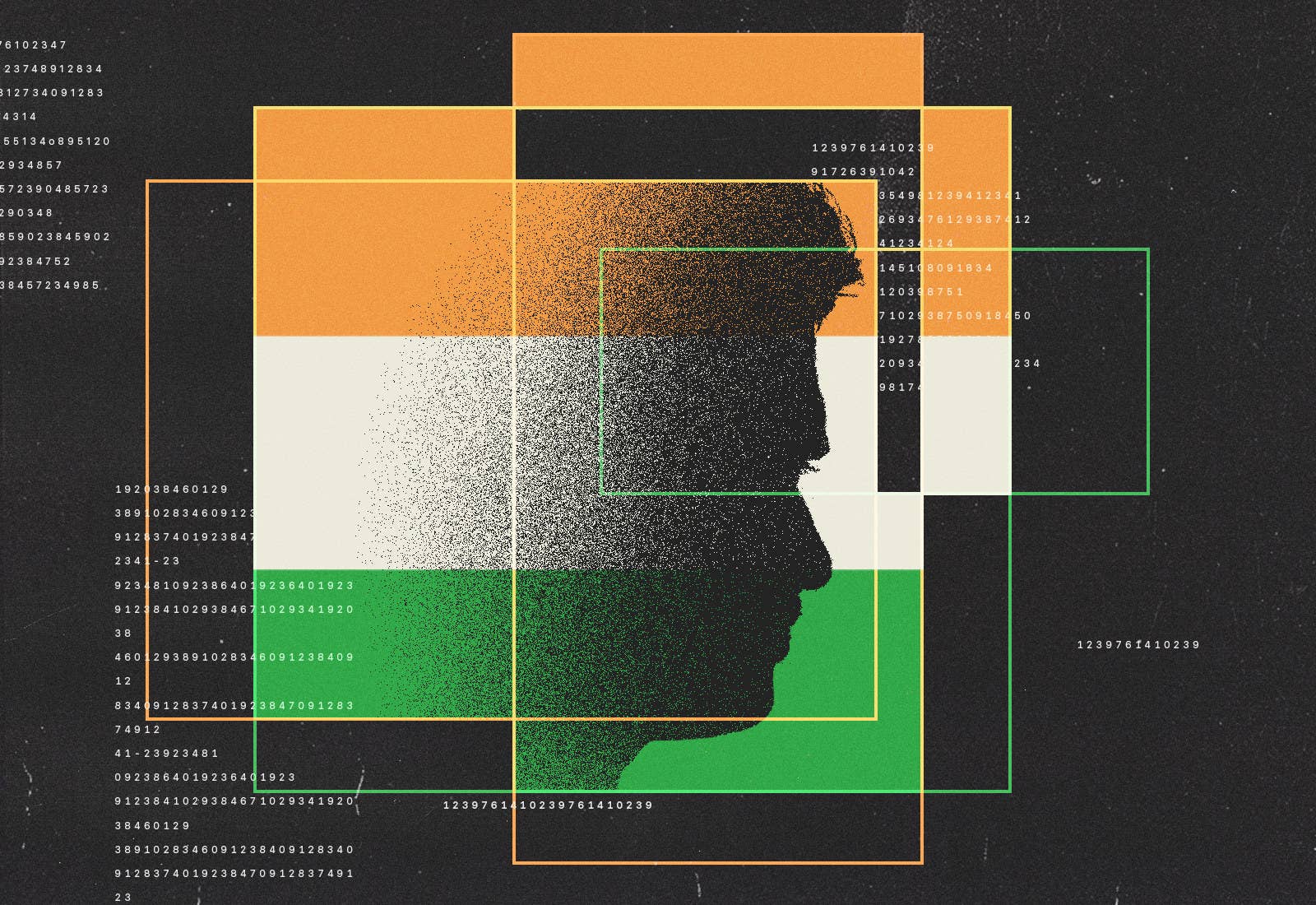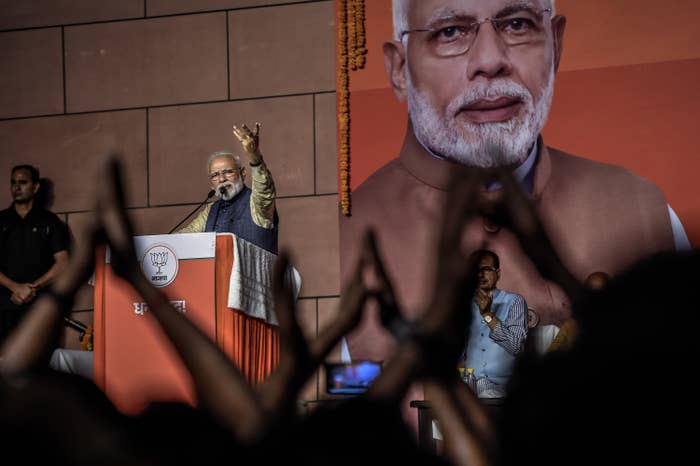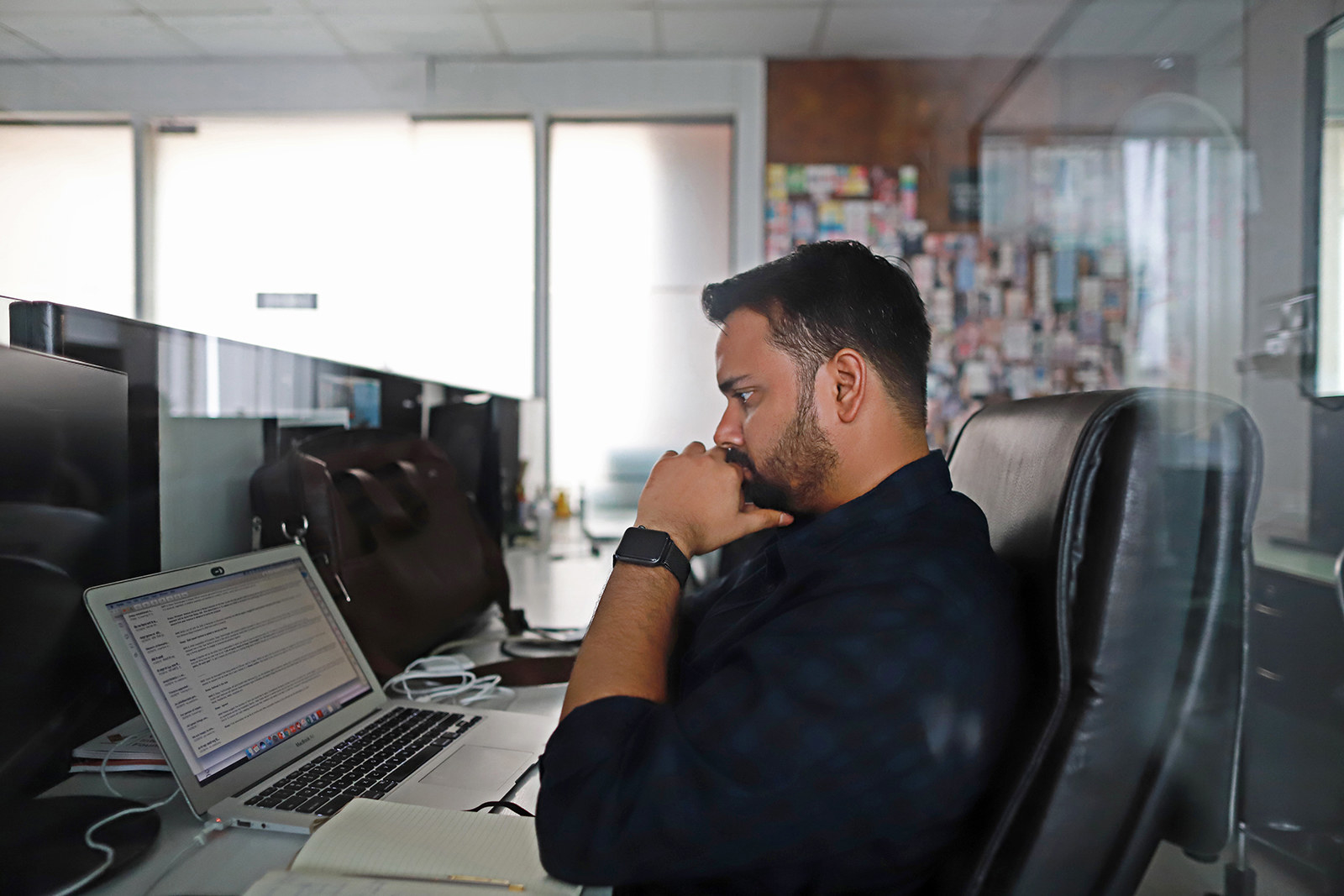
Siddhant T. is a lawyer who is so concerned about his privacy that he wanted his name changed for this story. And so, when an airline representative at New Delhi’s Indira Gandhi airport suggested he check in with his face for a flight to Bangalore in September, he bristled — and then declined. The representative looked confused and called a befuddled supervisor, who repeated what his colleague had said.
“I just sort of looked at them in disbelief,” said Siddhant, “and then shuffled off immediately to check in the old-fashioned way.”
Later that day, he posted a picture of his boarding pass to his Instagram. “I was just told that I could use my face to print [my] boarding pass,” he wrote. “How the f do [they] have my biometric data? Are they permitted to use it for shit like this?”
They are.
On Sept. 6, New Delhi’s Indira Gandhi airport became the fourth airport in India to test a facial recognition system to let passengers board by letting a machine scan their faces. The tech is scheduled to roll out at all the major airports in the country in the next few years. The government calls it “Digi Yatra” — Digital Journey — and it is a partnership between India’s federal aviation ministry and private companies. The aim, according to a 2018 government document, is to use biometric data — the curves of passengers’ faces, the tilts of their noses — to create a “digital travel experience.”
It isn’t just airports. Hundreds of Indian police stations, malls, and schools already use a patchwork of facial recognition systems powered by tech from dozens of private companies, and major cities have rushed to install hundreds of thousands of closed-circuit cameras on street corners.
And in the eyes of critics, each camera is another knot in this tightening mesh over India, in which facial recognition tech, a national biometric ID system, and weak data privacy laws are creating a surveillance state in a country ruled by a populist right-wing government.
The government of Prime Minister Narendra Modi, and his Bharatiya Janata Party, has surveillance ambitions to rival the most advanced in the world. India’s National Crime Records Bureau is in the midst of collecting bids from private companies to create the country’s first centralized facial recognition surveillance system. Once it’s up and running — the NCRB hasn’t specified a time frame for its launch — it will be linked with more than a dozen databases, although it is unclear at this point whether Aadhaar, India's biometric ID database that has drawn criticism for enabling nationwide surveillance on the country's 1.3 billion citizens, would be one of them.

The rise of Modi’s BJP has been linked to an increase in violence against the country’s Muslim minorities, including 2002 riots that killed hundreds of people in Gujarat while Modi served as chief minister of the state. The pattern has repeated more recently. In September, when Modi visited Texas with US President Donald Trump, the Atlantic wrote that “mob lynchings in India [have] for many Muslims have come to symbolize their existence under a Hindu-nationalist regime.”
A crackdown in the state of Jammu and Kashmir has entered its third month, including a blackout of electronic communications and military-enforced curfews, after the national government rescinded the quasi-autonomous status the state had enjoyed for seven decades.
And last month, India’s government started building mass detention camps after telling nearly 2 million people in the northeastern state of Assam — mostly Muslims — that they could be stripped of their citizenship. Days later, Amit Shah, India’s home minister and Modi’s second-in-command, chaired a meeting to jump-start the National Intelligence Grid, a project that would link together stand-alone databases containing tax records, bank details, credit card transactions, air and train travel records, and more.
According to a bid document that the NCRB published, the objectives of the system are to “[modernize] the police force, information gathering, criminal identification, verification and its dissemination among various police organizations and units across the country.”
But critics say that the system could give India’s right-wing government new ways to clamp down on dissenters and minorities
“I think [the centralized facial recognition system] will fundamentally change how surveillance is carried out in India,” said Vidushi Marda, a lawyer and a researcher at Article 19 and Carnegie India, who studies how police across the country use facial recognition. “I know the [government’s] pitch is ‘safety,’ ‘security,’ and ‘crime prevention,’ but it’s actually a surveillance mechanism.” In fact, said Marda, facial recognition is more dangerous than Aadhaar: “Unless we all get plastic surgery at the same time, there’s nothing we can do about it.”
Even plastic surgery may not be a dramatic enough remedy to avoid surveillance once the system is up and running. According to the government’s bid document, it should be able to compensate for modifications made by plastic surgery, age, scars, tattoos, beards, makeup, and more. It should also be able to work with pictures published in newspapers and “sketches.” It should also be able to capture footage from CCTV cameras, as well as images from public or private video feeds, and “generate alerts if a blacklist match is found.”

For years, Indian police stations have kept records of suspects and criminals — demographic information, identifying markers, photographs, and more — in dusty cardboard files. They were rarely digitized, let alone easily searchable. And thousands of different criminal records siloed in police stations across the country meant in most cases that if a criminal crossed state lines, police in the new state wouldn’t already have a record of them.
In 2016, Atul Rai saw a market. “The idea was to take our existing technology and build upon it and get into the local homeland security market,” said Rai, the cofounder of Staqu Technologies which began as an image recognition and data analysis firm in Gurgaon, a satellite city near New Delhi. “America had Palantir. China had SenseTime. India didn’t have a single brand like that in this space. So we wanted to be that.”
“America had Palantir. China had SenseTime. India didn’t have a single brand like that in this space. So we wanted to be that.”
Staqu worked with police stations to digitize their existing criminal records, and created a system that would let cops use an Android smartphone to click a picture of people they arrest, and log their demographic data, voice samples, and fingerprints into a national, searchable database. Staqu’s system is now used by police stations in eight Indian states. Rai claims that there are over a million records in the database so far, and police officers across the country are adding 1,000 more to the system per day.
When he started, Rai had two problems unique to India: Most existing facial recognition systems were trained on Western face models, and their images were captured mostly from high-resolution CCTV. In contrast, most of India’s CCTV cameras, said Rai, were low resolution, and, unlike existing systems in the US, there were no standards for India’s diverse set of facial features.
So Rai set about training Staqu’s system from scratch. The team developed proprietary tech to make sure that accuracy levels were high, even with low-quality images. And it scraped facial data from publicly available sources like Google Images of more than a million Indian celebrities from both Bollywood movies and dozens of regionally produced films popular across India’s 29 states. “We trained our model on the Indian facial ecosystem,” Rai said. Doing this, he said, was crucial, since Indians from different parts of the country can often look markedly different from each other. Kashmiris in the north, for instance, are pale, while people from South Indian states have much darker skin. Sikh men usually have full beards and turbans.
Authoritarian regimes have used these kinds of physical differences for discrimination or worse through facial recognition. A New York Times report published earlier this year highlighted how the Chinese government uses a secret system of advanced facial recognition technology to track and control Uighurs in the western region of the country who look distinctly different from China’s majority Han population.
“Can you use facial recognition to detect things like caste or religion? Given the [polarized] political situation in India, that would be our dystopia.”
Experts say it’s hard to draw direct parallels in India. “Can you use facial recognition to detect things like caste or religion? Given the [polarized] political situation in India, that would be our dystopia,” said Amba Kak, an expert on privacy and technology, who recently joined New York University’s AI Now Institute as director of global strategy and programs. “But it’s still early days for this technology in India.”
Rai said that his system, trained on Indian faces, cannot slice and dice Indian faces from different parts of the country. “That would be discriminatory,” he scoffed. “Tomorrow, someone can develop AI that might let a facial recognition system tell people apart on the basis of caste. It’s a dangerous thing. I don’t think that’s something that we need to let in the system. You’ve read 1984, right?”
Vijay Gnanadesikan, CEO of FaceTagr, a Chennai-based company that provides facial recognition tech similar to Staqu’s to police departments in three south Indian states, said that facial recognition technology can be used for both good and bad. “It’s up to governments to regulate it and tell us where the limits are,” he said.
Others disagree.
“I wouldn’t make a distinction in using surveillance tech for good and bad, and facial recognition technology is, by nature, surveillance technology,” said Kak. “Experiences globally have borne out that [surveillance] is the primary use of this technology, and if it is being deployed, I think we need to have a robust public conversation about it before deployment. In India, I think we’ve already missed the bus on that.”
Indeed, despite dozens of startups like Staqu and FaceTagr operating for years in the country, facial recognition only really came into public consciousness once people started noticing the large, ATM-like machines at some Indian airports.

“We are incredibly concerned,” said Apar Gupta, executive director of the Internet Freedom Foundation, a New Delhi–based nonprofit that advocates for digital rights. A national facial recognition system “will have an impact on the privacy of ordinary people and drive an agenda of social control that is illegal. There’s no law authorizing this bidding process, and it’s also arbitrary, disproportionate for what it claims its stated purpose is, and doesn’t have any legal safeguards or a system for accountability.” It also undermines, Gupta added, key elements of a ruling by the Indian Supreme Court in 2017 establishing a fundamental right to privacy.
Last month, the IFF, through a Right to Information request, obtained minutes of a meeting that members of the National Crime Records Bureau held in late July with representatives from 80 companies bidding to win the government’s order to build the centralized surveillance system. None of the companies were identified, but the document showed that they asked the government questions about integrating facial recognition data with India’s various state-level databases. Vasudha Gupta, a spokesperson from India’s Ministry of Home Affairs, under which the NCRB falls, did not respond to requests for comment.
"Facial recognition technology is, by nature, surveillance technology."
In a letter sent to the government, the IFF urged it to “take a step back and recall the bidding process until adequate safeguards that address various concerns are put into place.”
That outcome seems unlikely. The Modi government, which Indians recently reelected in a landslide political victory, has pushed for wider national surveillance. Last year, it seemingly authorized 10 government agencies to conduct surveillance of Indians’ computers. It also proposed a center to monitor social media — shelving the plan after public outcry.
If the government still goes ahead with the plan, Gupta said that the IFF will litigate. “We are making every good-faith attempt and examining all options before it comes to that,” he said.
As India continues to build such a system, concerns about surveillance potential of the tech are rising around the world. US Rep. Alexandria Ocasio-Cortez, a Democrat representing a district within New York City, recently called facial recognition technology part of "a global rise in authoritarianism and fascism.”
Some of those who might build the system in India have dismissed such concerns. “It’s a great tool for a country like this. If you want to have law and order, technologies like these should come up,” said Gnanadesikan, the FaceTagr CEO. As for privacy concerns, he dismissed them as “Western paranoia.” ●
CORRECTION
It is still unclear whether India's centralized facial recognition system would be linked to Aadhaar, its national biometric ID database. An earlier version of the story said it would.
